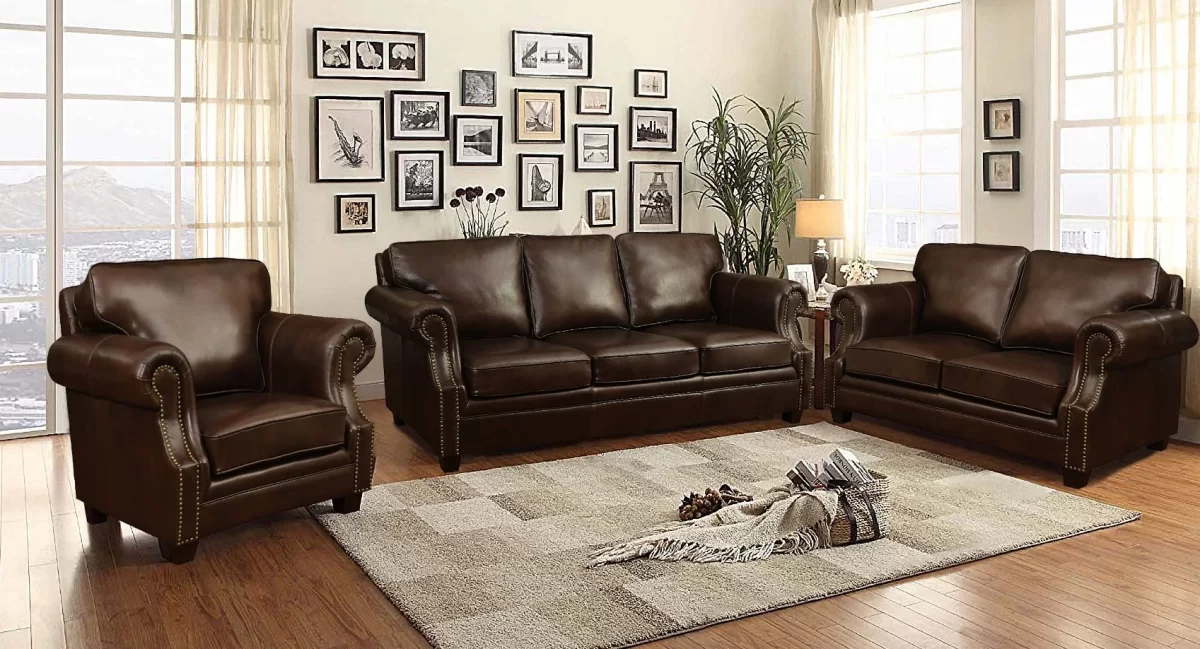When it comes to restoring your beloved leather sofa, you may find yourself torn between undertaking the repair as a do-it-yourself (DIY) project or seeking the expertise of a professional. While both options have their advantages and drawbacks, it’s crucial to assess your skills, time availability, budget, and the extent of damage before making a decision. In this article, we will explore the pros and cons of DIY leather sofa repair versus hiring a professional, helping you determine the right path to restore your leather furniture.
DIY Leather Sofa Repair
1. Assessing the Damage
Before embarking on a DIY repair journey, carefully examine your leather sofa to identify the type and extent of damage. Common issues include scratches, cracks, fading, and discoloration. Assessing the damage will give you an idea of the level of expertise required and the materials and tools needed for the repair.
2. Gathering the Necessary Tools and Materials
Once you’ve assessed the damage, it’s time to gather the necessary tools and materials for the repair. This typically includes leather cleaning solutions, leather conditioner, sandpaper, leather filler or adhesive, a soft cloth, a sponge or brush, and color-matching leather dye or paint. Ensure you have all the required supplies before proceeding.
3. Cleaning and Preparing the Leather
Before attempting any repairs, it’s essential to thoroughly clean and prepare the leather surface. Use a mild leather cleaner and a soft cloth or sponge to remove dirt, stains, and oils. This step is crucial as it ensures better adhesion and a cleaner surface for any subsequent repair work.
4. Repairing Scratches and Cracks
For minor scratches, you can use a leather conditioner or repair kit to buff them out. Deeper scratches or cracks may require the use of a leather filler or adhesive. Apply the filler or adhesive carefully, following the manufacturer’s instructions, and use sandpaper to smoothen the repaired area. Remember to blend the repaired section with the surrounding leather for a seamless finish.
Professional Leather Sofa Repair
1. Expertise and Experience
One of the significant advantages of hiring a professional for leather sofa repair is their expertise and experience. Professionals have in-depth knowledge of different leather types and repair techniques, ensuring that the restoration is done correctly. They can handle complex repairs, such as extensive tears or structural issues, with precision and skill.
2. Quality and Longevity
Professional leather repair services often provide a higher quality of workmanship. They have access to specialized tools, professional-grade materials, and industry-specific techniques that may not be readily available to DIY enthusiasts. Consequently, the repairs carried out by professionals tend to be more durable and long-lasting.
3. Time and Convenience
Repairing a leather sofa can be a time-consuming task, especially if you’re not familiar with the process. By hiring a professional, you save yourself the effort and time required for research, gathering materials, and executing the repair. Additionally, professionals can often offer on-site or pick-up services, making the process even more convenient.
Making the Decision
Now that we have examined the pros and cons of both DIY and professional leather sofa repair, it’s time to make an informed decision. Consider the following factors:
1. Skill and Confidence: Assess your level of skill and confidence in undertaking a DIY repair. Complex or extensive damages may require professional intervention.
2. Time Availability: Evaluate your schedule and determine if you can dedicate sufficient time to complete the repair project. DIY repairs can be time-consuming, while professionals can offer a quicker turnaround.
3. Budget: Compare the costs associated with a DIY repair versus hiring a professional. Factor in the cost of tools, materials, and your time.Sometimes, professional repair services can be more cost-effective in the long run.
4. Damage Severity: Take into account the extent of damage. Minor scratches or simple repairs may be suitable for a DIY approach, while significant tears or structural issues may necessitate professional expertise.
Choosing between DIY and professional leather sofa repair depends on various factors, including your skills, time availability, budget, and the extent of damage. While DIY repairs can be fulfilling and cost-effective for minor issues, professional services offer expertise, quality, and convenience for complex or extensive damages. Assess your unique situation and make an informed decision to restore your leather sofa effectively.
FAQs:
1. How much does professional leather sofa repair typically cost?
The cost of professional leather sofa repair can vary depending on factors such as the extent of damage, the type of repair needed, and the service provider. It’s best to get quotes from different professionals to compare prices and services.
2. Can DIY repairs match the quality of professional leather sofa repair?
DIY repairs can yield satisfactory results for minor issues such as scratches or small tears. However, professional repairs often offer a higher level of craftsmanship and durability, especially for complex or extensive damages.
3. Is it possible to repair a severely cracked leather sofa at home?
Severe cracks in leather may require professional intervention. They have the expertise and tools to handle such issues effectively. DIY repairs may not be sufficient for severe cracking.
4. Will repairing a leather sofa restore its original color?
Repairing a leather sofa can help improve its appearance and address color issues to some extent. However, it may not completely restore the original color. Color restoration may require professional dyeing or reupholstering services.
5. Are there any risks involved in attempting DIY leather sofa repair?
DIY repairs come with some risks, especially if you lack experience or knowledge in leather repair techniques. There is a possibility of making mistakes that could further damage the sofa or result in an unsatisfactory repair outcome.
6. How long does professional leather sofa repair usually take?
The duration of professional leather sofa repair depends on the extent of the damage and the specific repair required. Minor repairs may be completed within a few hours, while complex or extensive repairs can take several days or even weeks.
7. Can I use regular household products to clean my leather sofa?
It’s generally recommended to use products specifically designed for cleaning and conditioning leather. Regular household cleaners may contain chemicals that can damage or discolor the leather. It’s best to consult the manufacturer’s guidelines or seek professional advice.
8. Is it necessary to use a leather conditioner after repair?
Using a leather conditioner after repair is beneficial as it helps moisturize and protect the leather, keeping it supple and preventing future damage. It can also enhance the appearance and prolong the lifespan of the repaired area.
9. What should I do if my leather sofa has mold or mildew?
Mold or mildew on a leather sofa requires immediate attention. It’s advisable to seek professional help as they have the expertise to safely remove mold and treat the affected areas without causing further damage to the leather.
10. Can I change the color of my leather sofa during the repair process?
Yes, it is possible to change the color of a leather sofa during the repair process. Professional leather repair services often offer color-matching and dyeing options, allowing you to choose a new color or restore the original color of the sofa.


